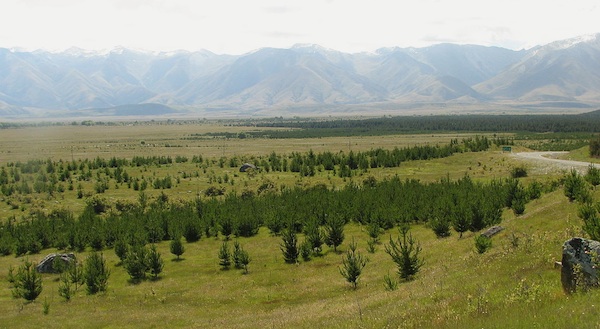The Government should be cautious about planting pine near northern kauri forests because research suggests they may act as reservoirs for kauri dieback, says an expert in the disease.
Dr Amanda Black, of the Bio-Protection Research Centre, says pine plantations and agricultural pasture may have a role in incubating and spreading the disease – as revealed by research for a Master’s thesis, completed by her student, Kai Lewis.
But at the same time, the Government is promoting an increase in commercial forestry – including radiata pine – as part of its 1 billion trees programme.
“We urgently need further research to clarify the role pine forests, pasture, and other plants play in incubating and spreading Phytophthora agathidicida – the organism that causes kauri dieback,” says Dr Black, who supervised the study and thesis by Mr Lewis.
“Until we are sure of what role they play, we should be very careful about planting any further pine plantations anywhere near kauri forest.”
For his thesis at Lincoln University Mr Lewis studied how well P. agathidicida reproduced in three types of soil: kauri forest, pasture, and pine forest. He collected samples near Waipoua Forest in Northland and one of the original mainland sites from which kauri dieback has spread.
Results showed that in its early stages of development P. agathidicida reproduces much more rapidly in pine forest and pasture soil than it does in kauri forest soil. In pine forest soil it also produces more long-lived spores (oospores).
Other research reported earlier this year showed P. agathidicida infected other native plants, including tanekaha, suggesting more potential hosts need to be examined.
Mr Lewis’s research also showed that P. agathidicida could infect Pinus radiata and several common pasture plants, even those that show no symptoms. This suggested other plants and soil may act as a reservoir for P. agathidicida.
“This raises the possibility that kauri dieback may be moving from pine plantations and pasture into kauri forests, carried by people, animals, and even on machinery,” says Dr Black.
“We urgently need further research to find out if this is happening and how. Until we know the answer, we need to be very careful.”
In his thesis Mr Lewis said investigating the role of unfenced pasture next to kauri forests was a high priority for further research.
He also found two other species of Phytophthora (P. pini and P. gregata), which can infect several plant species, were present in kauri forest and pasture soils. Their possible role in infecting native trees is another high priority for further research.
A paper submitted to an academic journal as a result of this research is under review. Another is about to be submitted.
One of the papers outlines the discovery of the two new species of Phytophthora in New Zealand, the other looks at the effects of fragmented landscapes on the growth and survival of P. agathidicida.
The full thesis from Lincoln University’s Research Archive can be downloaded HERE.
Source: Bio-Protection Research Centre












